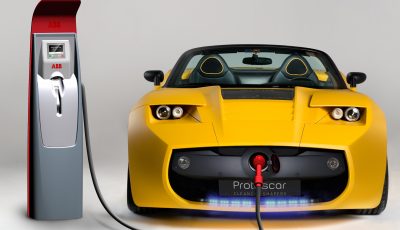Evaporation could offer new source of renewable energy
By Tim Radford
LONDON, 6 October, 2017 – US scientists have identified a new source of renewable energy: evaporation.
The flow of water vapour into the atmosphere – it happens wherever there is liquid water – could generate up to 325 gigawatts. This is 69% of the nation’s annual electrical generation. The same process could save about 25 trillion gallons of water every year. This is about one fifth of US water consumption.
And the same technology could be exploited as a natural battery to conserve renewable energy for those moments when the wind fails to turn the turbines or at night when the solar power plants lie idle.
There is a catch. The project has been demonstrated so far only in the laboratory. But the small-scale experiments with what its inventors call the evaporation engine show that the new source could in theory complement other, more fully developed renewable technologies.
And it would work even more efficiently in those hot landscapes most prone to drought: California, Arizona and Nevada, the researchers say.
A team from Columbia University report in the journal Nature Communications that they based their calculations on data from 934 weather stations across the United States to calculate the potential power – sometimes called latent heat – packed by the upward flow of water molecules from all the lakes and reservoirs larger than 0.l square kilometres in the contiguous US. They excluded rivers, farmland, coasts and the Great Lakes.
The experimental technology exploits natural biology and physics. The evaporation engine controls humidity with the action of a shutter and the expansion and contraction of bacterial spores in response to this process is transferred to a generator that delivers current.
The study is yet another instance of the scale and range of ingenuity repeatedly demonstrated by the world’s laboratories in search of alternatives to the fossil fuels that so far have driven human economies, but now threaten to drive global warming and potentially catastrophic climate change.
US researchers have exploited computer studies and scaled up existing technologies to show, again and again, that the US could be fuelled by wind, sunlight and water power and that what works for the US could drive development in many parts of the world. The argument is that the knowhow exists: what is lacking is the political will.
But the Columbia scientists make no such claims: they have devised their own way of exploiting the water cycle in a manner that would actually reduce evaporation in the warmest, driest states and at the same time siphon electrical energy from the process.
They can also demonstrate the system’s potential as a renewable battery that exploits already existing infrastructure such as a reservoir or lake.
But they have yet to test the technology on a larger scale, and beyond the laboratory: at a reservoir, or in a greenhouse. The latest study calculates the potential energy drifting upwards from standing water, on cold days as well as hot.
“We have the technology to harness energy from wind, water and the sun, but evaporation is just as powerful,” said Ozgur Sahin, a biophysicist at Columbia University, and the senior author. “We can now put a number on its potential.” – Climate News Network







